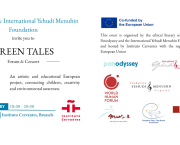
A peek inside the world of science writing and the 5 ‘R’s that make it tick
 5 min
5 min
A peek inside the world of science writing and the 5 ‘R’s that make it tick
What if I told you writer’s block does not exist? And that there is such a thing as too much research? Here are some of my learnings over six years as a health writer and medical communications professional, that I hope you’ll find useful.
1. Research to build your narrative
If you’re writing healthcare content, it’s likely you’re no stranger to going down the rabbit hole of research. How extensive should your research be? And how do you know when it’s time to stop researching and begin writing?
Over the years I’ve learned to time myself with the research stage to avoid getting carried away with hours of endless reading. Allotting 20% of total writing time for this step tends to work best, especially if you make notes and highlight important points along the way. Shortlist studies that help build your narrative and minimise secondary reading. Some articles may however take a longer time to research, depending on the complexity of the topic and the writer’s own knowledge of the subject.
2. Remember your audience at all times
Never lose sight of your reading audience at any point of the writing process. This will ensure your article has appropriate language and tone that resonates with the reader and drives a strong point home.
I was fortunate enough to receive some valuable advice from a writing mentor a few years ago. The article was a technical piece on new cancer treatments (ghost-written by us on behalf of a doctor) and was meant for lay persons with no health background. “Write it as you would speak it to your mother or brother” she told me, and this advice hasn’t failed me a day since then. Another suggestion you could consider is to turn to analogies or metaphors that convey your point in a more relatable manner.
3. Re-write and edit after your first draft is in place
Every writer has his or her own writing process – a fact I don’t intend to contest. But an interesting learning to note here – both from my own experience and that of peers – is that the writing process is smoother when written at one go, followed by a detailed editing process.
The alternative option i.e. writing a paragraph and editing it, then proceeding to write the next paragraph, is time consuming and threatens to break your train of thought. This could well impact writing timelines and result in an article that sounds disjointed or simply ‘not quite there.’
4. Reduce jargon, keep it simple and straightforward
Write to interest your reader, not to impress them. Using words that are lengthy, technical and uncommon may have the opposite effect than intended, leaving your reader bored, confused or scrambling for a dictionary.
Wherever possible, use words like cancer specialist instead of oncologist; heart disease instead of cardiovascular disease; and stroke instead of cerebrovascular accident.
Let’s face it, with today’s shrinking attention spans, it is unlikely your reader will stay on to read a tortuous, onerous article. Now wouldn’t you have preferred I said complicated article instead? Don’t get me wrong; there’s no harm in indulging in the occasional sophistication, but don’t let this corrupt your article and its core message.
5. Read your article aloud
So many awkward phrases, clunky sentences and tense issues can be picked up when you HEAR your article instead of reading it. Read the article out loud to yourself, or find a colleague, friend or family member to be your audience.
With practice, reading aloud can become a form of secondary editing, highlighting areas that need further refining and fixing. Keep an open mind and step into the audience’s shoes while you’re at it – this will bring in an added layer of conciseness and clarity to your piece.
At the end of the day, there are no dos and don’ts when it comes to writing, style and expression. The writing experience is a never-ending journey of introspection, reflection and the feeling that you can always make just one more edit to your article. It’s an experience no writer would trade for the world.









 English
English
 Français
Français
 Deutsch
Deutsch
 Italiano
Italiano
 Español
Español



 Contribute
Contribute









 You can support your favorite writers
You can support your favorite writers





